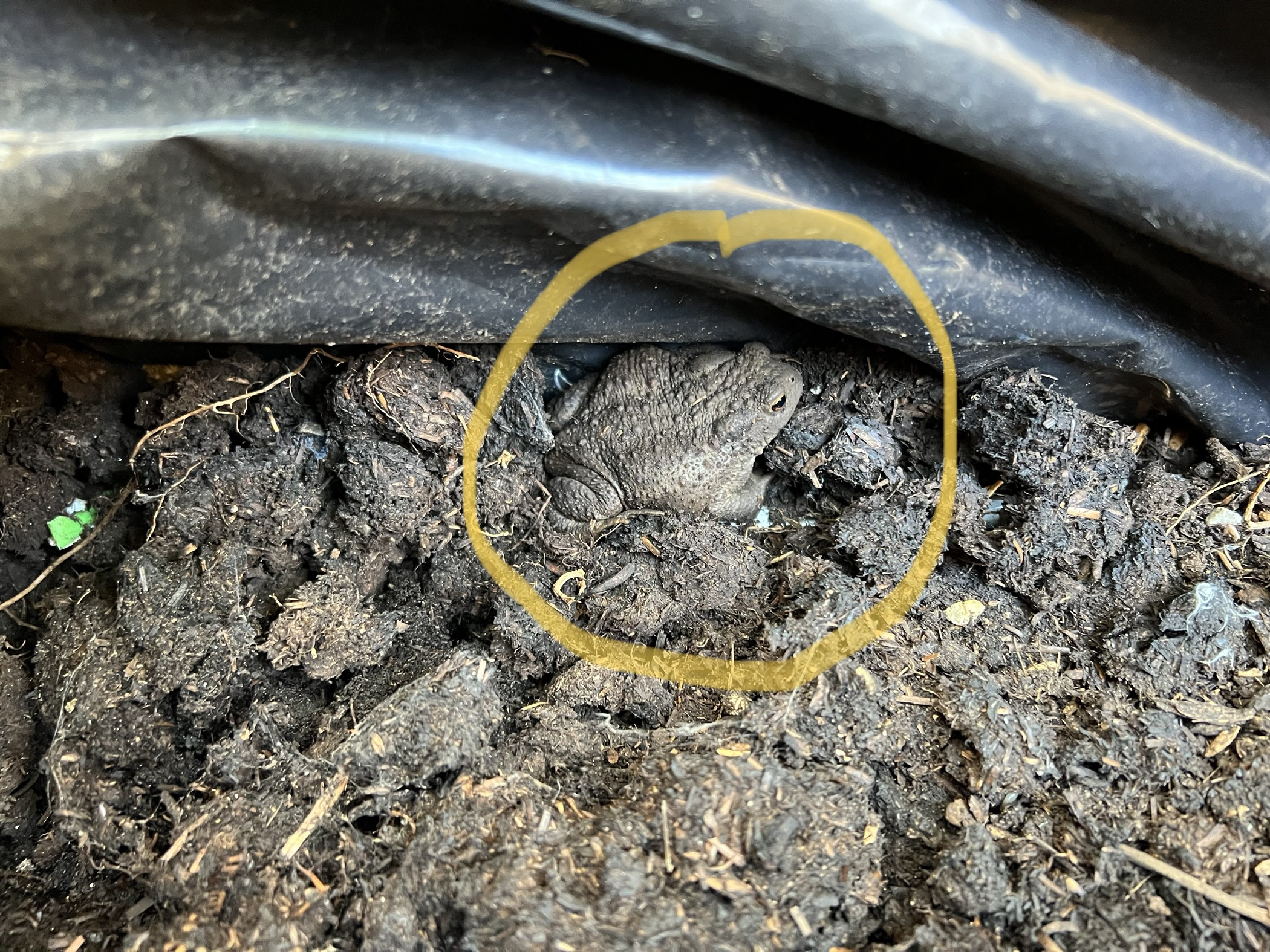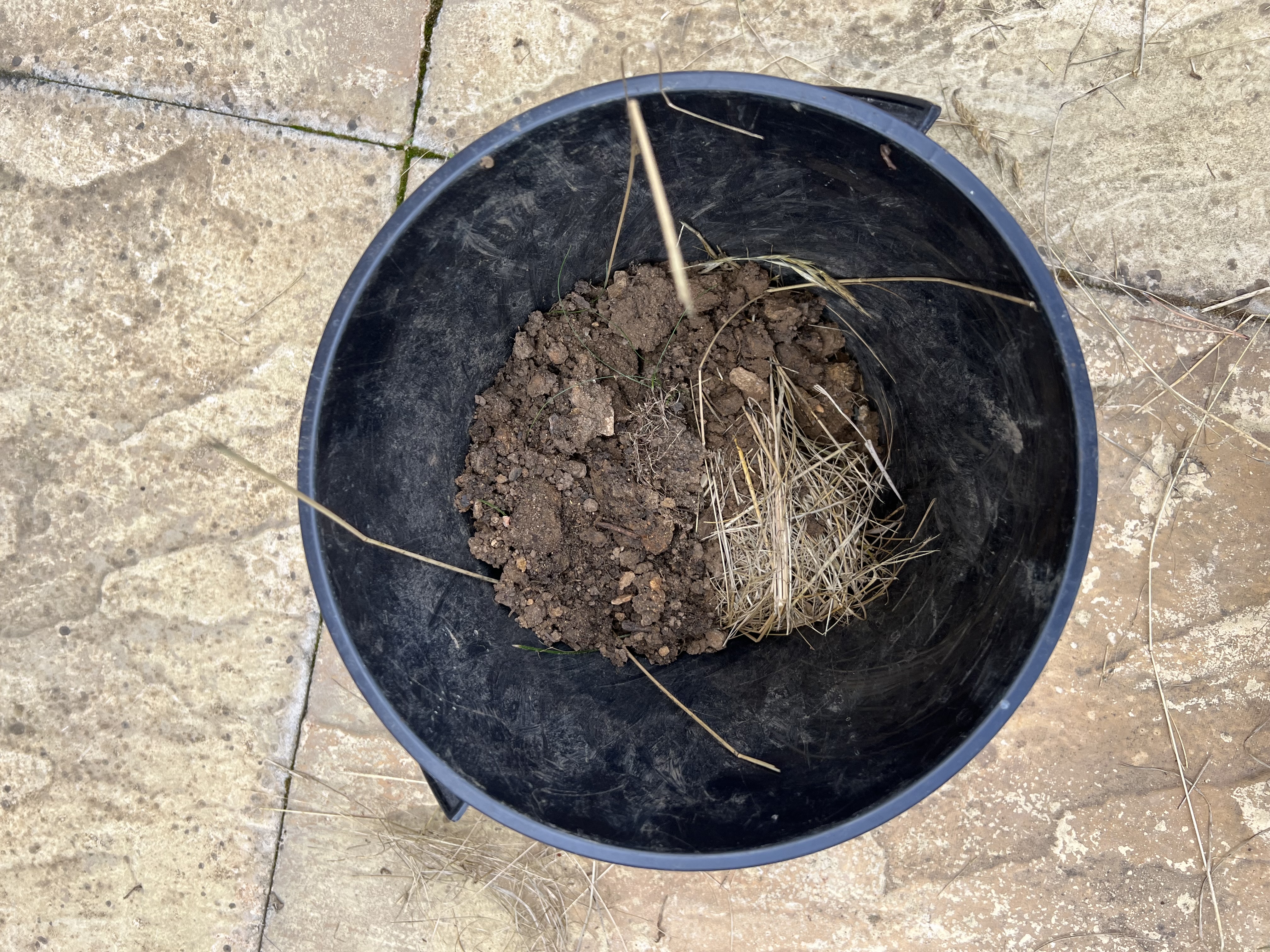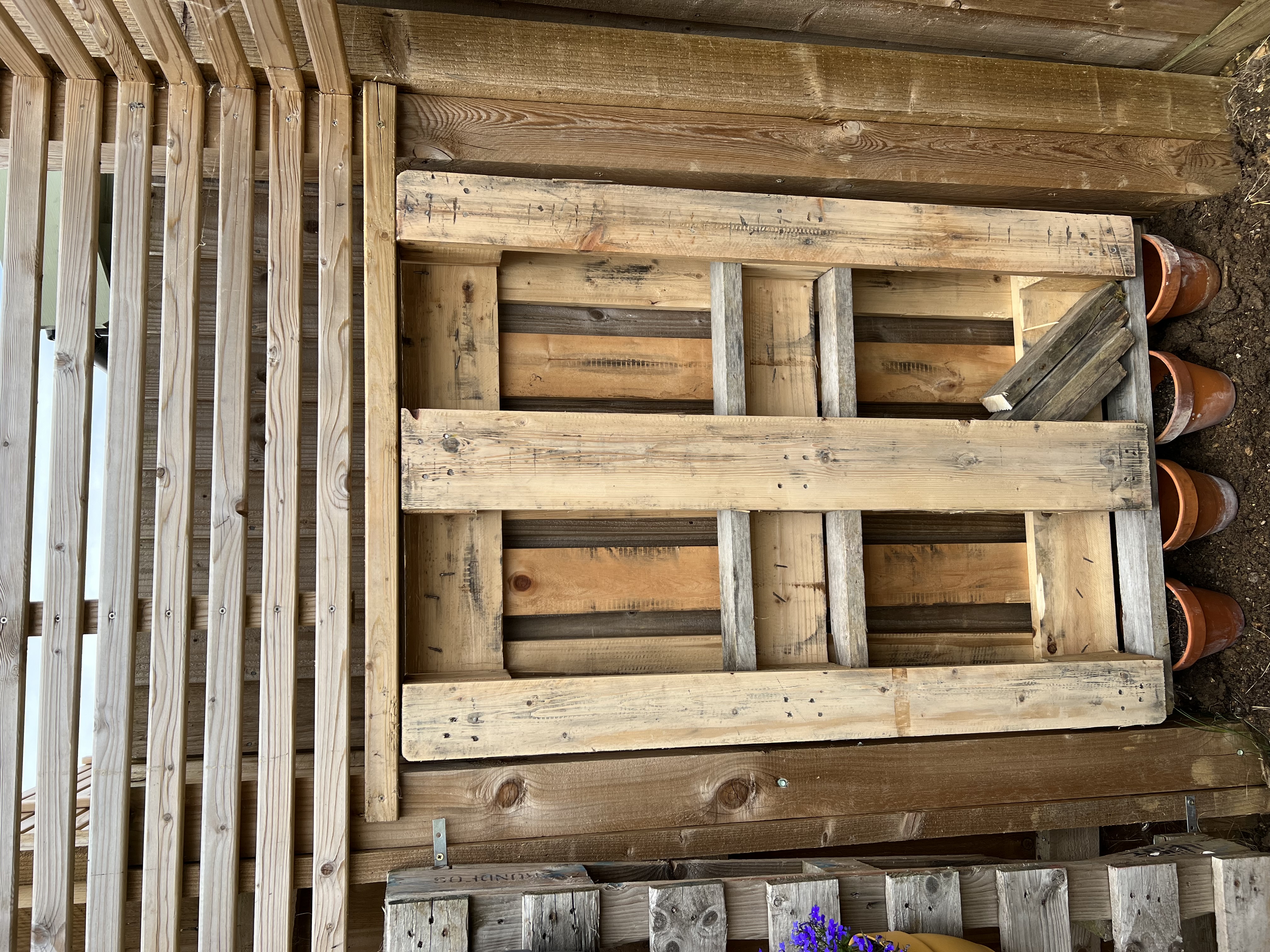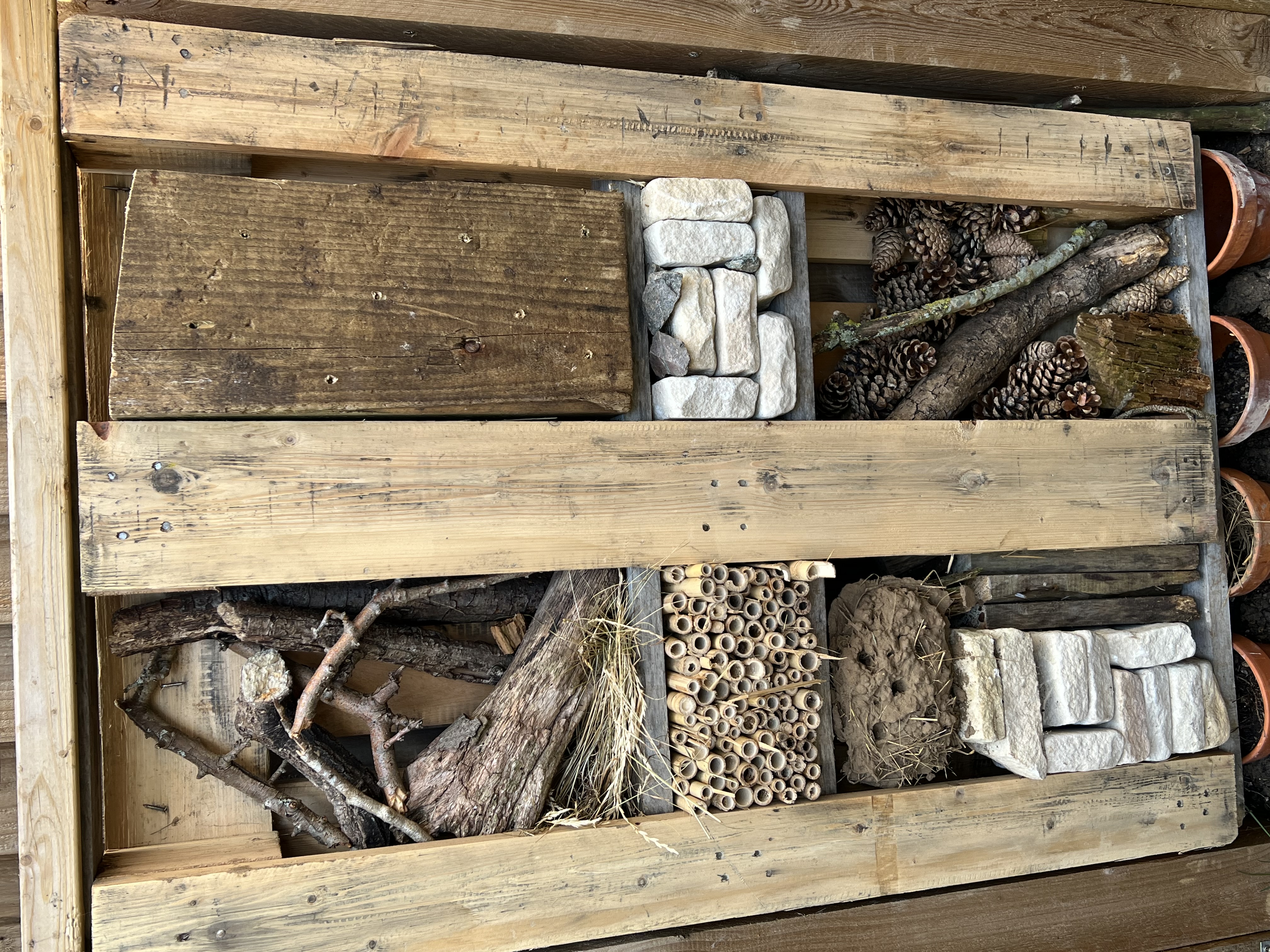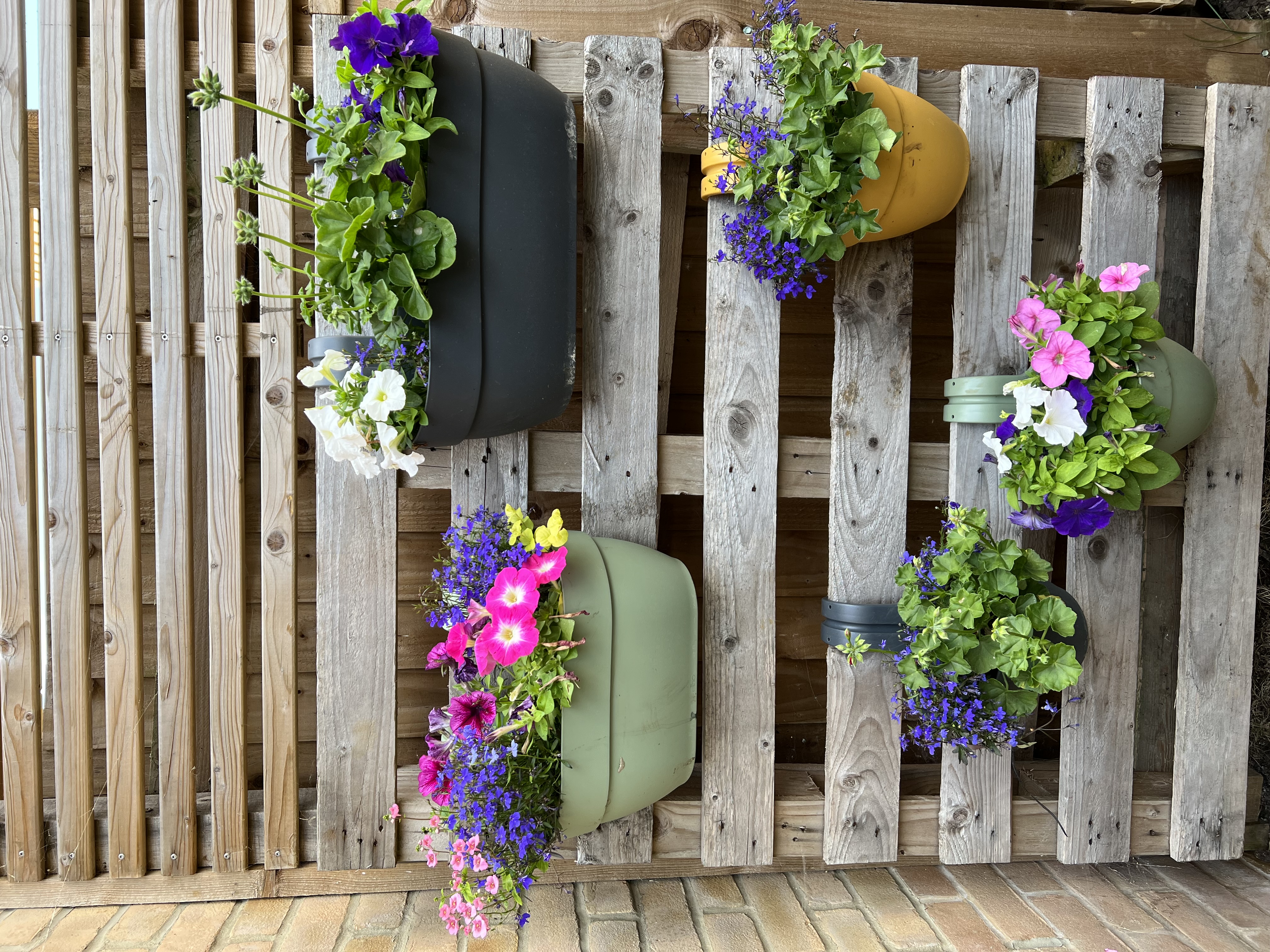We need to be mindful that the depletion of pollinators and declining soil health has a devastating effect on the food chain and delicate global ecosystems. Professor Dave Goulson of Sussex warns us that ‘ insects are in rapid decline as we make vast tracts of land inhospitable to most forms of life… we lose insects then everything is going to collapse.’
With the school holidays coming up, here are two activities to engage children and grandchildren whilst helping increase the biodiversity in your garden:
Home made brick for insects to lay their eggs
Bug Hotel
If you can get hold of an old pallet, challenge yourself to make Tom Massey’s bug hotel (see RHS Resilient Garden – Tom Massey). We did and all the family can help collecting old branches, twigs, natural stones, bamboo canes and leaves. For alternatives go to www.rspb.org.uk/build-a-bug-hotel
If you have a good-sized garden, we recommend you visit www.mains2rains.uk where Cranfield University and the RHS have teamed up to generate an online resource to show gardeners how to use less mains drinking water. Following our earlier advice and planting perennials and bulbs these plants tend to have good root structures and will need less watering than annuals and bedding plants.
Although plants in pots need more watering it can be very handy to have them in pots when we are subject to a heatwave, or you are going on holiday. Moving the pots to a north or east facing side of your garden can help them survive until you return. If this isn’t possible placing under garden furniture can provide shade. In winter pots are best placed on small feet but in the summer saucers (readily available from garden centres) are really helpful to catch extra rainwater and enable you to fill them as well as fully watering the pot before you leave. If you have been vertically growing move your baskets so that one is in line above the other so that any run off water will drain on to the plant below and not waste a drop. We find that grow bag trays are very useful to place pots in temporarily and can be filled with water to sustain the plant whilst you are away.
Malcolm Thomas
Latest posts by Malcolm Thomas (see all)
- Get Your Garden Spring Ready - 8th April 2024
- Renewable Energy in the Private Rented Sector - 8th April 2024
- School Holiday Easter Cooking Fun - 11th March 2024


